What does your SEO process look like?
Does your blogging checklist look something like this?
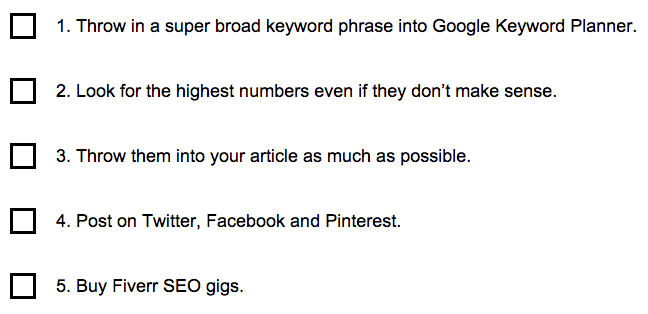
Fact: it’s called search engine marketing. Not manipulation.
It’s 2017 and we’ve evolved past old SEO trickery.
I bet you work hard and I’ll be the first to tell you that you deserve your rankings. But you need a streamlined process.
So here’s what I did:
I put together a comprehensive SEO checklist that will help improve your search engine optimization process for every single blog post you write from here on out.
Here’s what we’ll cover:
- Content and audience research.
- Preliminary keyword research.
- Competitive analysis.
- Relational keyword research.
- Content creation and optimization.
- Promotion and link acquisition.
And I’m going to show you exactly how to follow this process step-by-step.
Sound good?
Then let me introduce you to:
“The Mammoth SEO Checklist to Rank any Blog”.
[easy-social-share buttons=”twitter,facebook,pinterest” counters=0 hide_names=”no” url=”https://www.moneyjournal.com/seo-checklist/” pinterest_text=”Pin” facebook_text=”Share It” twitter_text=”Tweet”]

[easy-social-share buttons=”twitter,facebook,pinterest” counters=0 hide_names=”no” url=”https://www.moneyjournal.com/seo-checklist/” pinterest_text=”Pin” facebook_text=”Share” twitter_text=”Tweet”]
Embed this on your Blog
Blog with a Purpose that Drives you Closer to a Goal
I’ll be blunt:
Don’t let your emotions guide your content strategy. We’re talking about SEO for blogs and not your digital diaries.
Don’t get me wrong.
I’m all for personal, lifestyle, mommy and daddy blogs. I binge read them all the time.
But if people don’t care about what you wore today, your last family trip, what you ate for lunch or when your last bowel movement was, then you need to dive into data-driven blogging.
The truth hurts…
But stagnant traffic hurts even more.
So how long should content be?
Here’s what SerpIQ found:

The top 10 search results all have over 2,000 words.
Length is generally a byproduct of coherent value. Wordiness to fit the quota is meaningless and annoying.
People search for answers. If there is no value in it for them, then why stick around?
Aside from length, good blog topics usually possess four key attributes:
- Worthy social stats.
- Proven track record of backlinks.
- Discussion in forums.
- The post assists in fulfilling a conversion goal.
The last one gets ignored the most.
But here’s the deal:
Targeted audiences drive valuable conversions.
Define your conversion goal and create content that’s going to slave to that need.
Step 1: Find Scorching Hot Blog Topics with Social Shares
In a 2014 video, Matt Cutts from Google’s web spam team was asked this question:
“Are Facebook and Twitter signals part of the ranking algorithm? How much do they matter?”
He responds by saying:
Facebook and Twitter pages are treated like any other pages in our web index…
But as far as doing any special, specific work like ‘you have this many followers or this many likes on Facebook’, to the best of my knowledge, we don’t currently have any signals like that in our web search ranking algorithms.
Facebook and Twitter pages are treated like any other pages in our web index…
So should SEOs stop focusing on social media?
No way…
Social media is a fantastic medium that generates engagement, exposure and links.
And guess what:
Social shares have a positive correlation with inbound links.
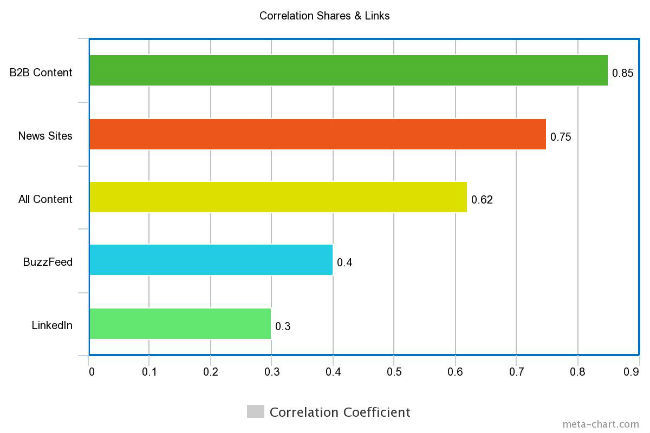
Steve Rayson from Buzz Sumo analyzed 10,000 posts and found a positive correlation between links and shares; B2B content scoring the highest correlation coefficient at 0.85.
Let’s take a look at Buzz Sumo’s tool and see what’s getting shared.
Here’s what you should do when searching for hot blog topics:
- Search for a broad keyword phrase.
- Look for high levels of social sharing.
- Find at least one or two authority sites in the top 10.
- Create two lists of keyword phrases by analyzing headlines.
- List #1 – Closely related words to your broad keyword phrase.
- List #2 – Modifiers like “how to”, “best”, “top” and other industry related keywords.
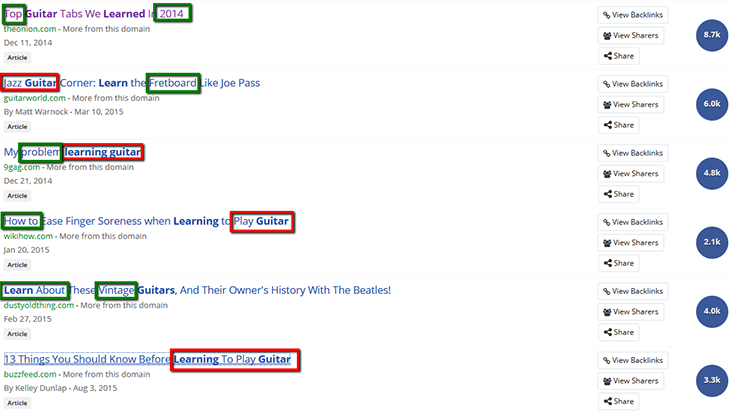
Having a history of social sharing shows potential popularity in a topic. But remember:
Correlation does not equal causation.
Step 2: Dip into Keyword Research to Find Your Topic
Before you start writing with the intent to rank for a broad term like “guitar”, head on over to Google Keyword Planner to generate a working list of potential primary keyword phrases.
After hitting the keyword tool page, select “Multiply keyword list to get new keywords“.
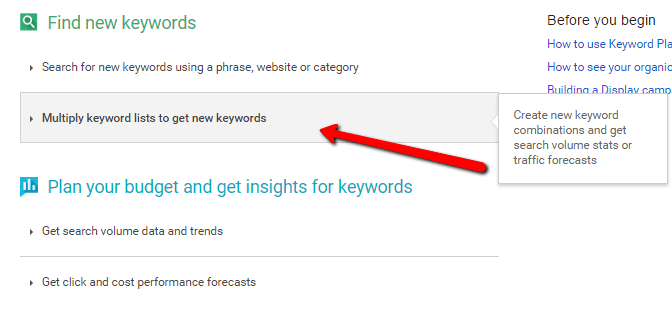
Now use the two lists you built using BuzzSumo.
Take your first list of synonyms and paste it under list 1. Then paste the modifier words in list 2 and complete your search for volumes.
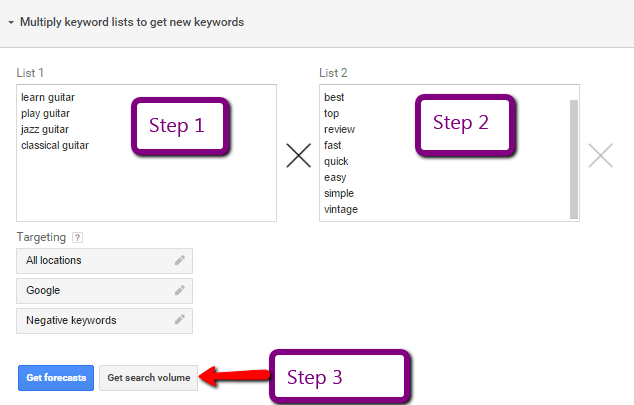
Google will now send you a hardcore mashup of your two lists.
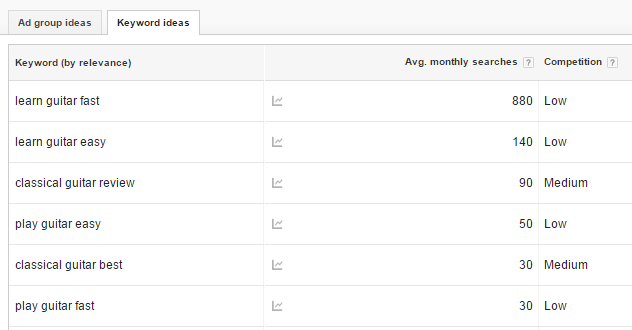
Export that list and head on back to the main page. Reverse the lists and make your own remix.
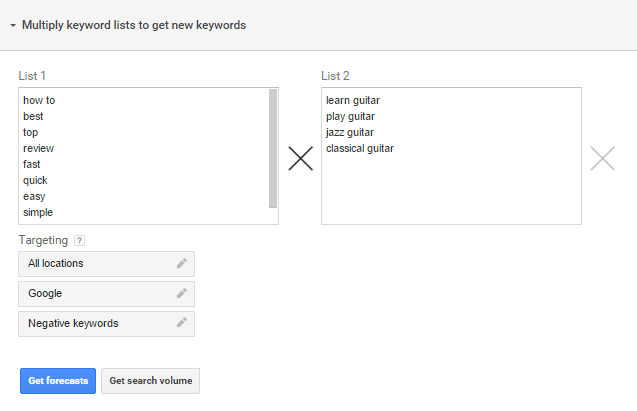
After running your second search, you should have a massive list of keywords to sort through.
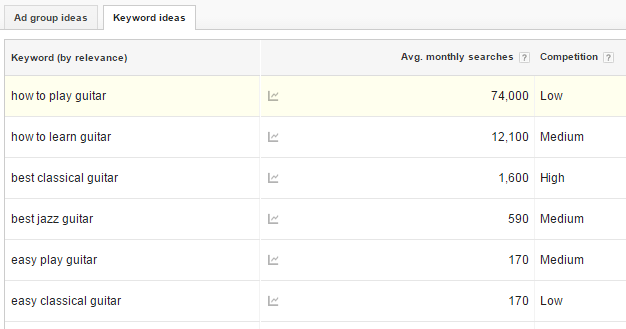
Let’s dissect these lists real quick.
There are generally three categories that you’ll find:
- The keyword phrase can’t be used naturally in a sentence.
- There is low user intent.
- Combining certain keyword phrases are better suited for separate blog posts.
The solution is simple:
Pull out the weeds, and plant the seeds.
Naturally, you’ll get ideas for blog topics by connecting the dots. I cut my list in half by filtering out the phrases that didn’t make sense in plain English.

Now that we’re nice and cozy, let me address a pain point that all of us DIY SEO bloggers go through:
Will my site rank?
Step 3: Conducting a Realistic Competition Analysis
As nice as it would be to rank for a mega-keyword phrase like “SEO” (673,000 monthly searches), we need to be real.
It’s 2017 and search engine optimization isn’t about ranking for single word phrases anymore.
You might be thinking:
I don’t want 90 visitors a month. I want 673,000.
We all do. But here’s the deal:
Targeting numerous long tail phrases drives targeted traffic and accumulates massive amounts of organic search visitors over time.
Let’s take a look at the king of the long tail game:
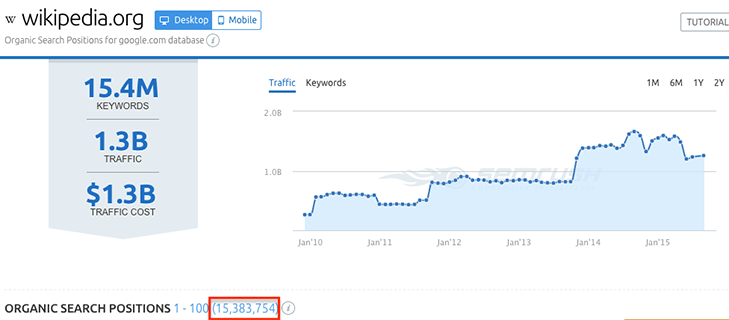
Wikipedia dominates top tier keyword phrases with over 15 million organic search positions.
It’s about creating content that best serves the user intent, which in turn fulfills our conversion needs.
Ranking for single word keywords usually hold very low intent and is not a battle worth fighting.
You can’t quantify keyword difficulty. But we’ll try anyway…
First, you need to understand that there is no way to accurately quantify keyword difficulty. Google is constantly making changes to their search algorithms, so focusing on key ranking metrics is the best we can do.
Here are the three key factors we’ll look at:
- Domain and Page Authority.
- Intentional optimization for keywords (relevance).
- Backlinks – quality vs. quantity.
Analyzing Domain and Page Authority:
If you haven’t already downloaded MozBar for Chrome, get on it.
Here it is in action when performing a Google search query:”.

The two key metrics to look at are Domain Authority (DA) and Page Authority (PA).
Domain and page authority represent Moz’s best prediction for how a website will perform in search engine rankings.
You want to compete with a similar tier to give yourself a better chance at winning rank.
This isn’t rocket science, but it’s an instant visualization that explains reachable keyword targeting.
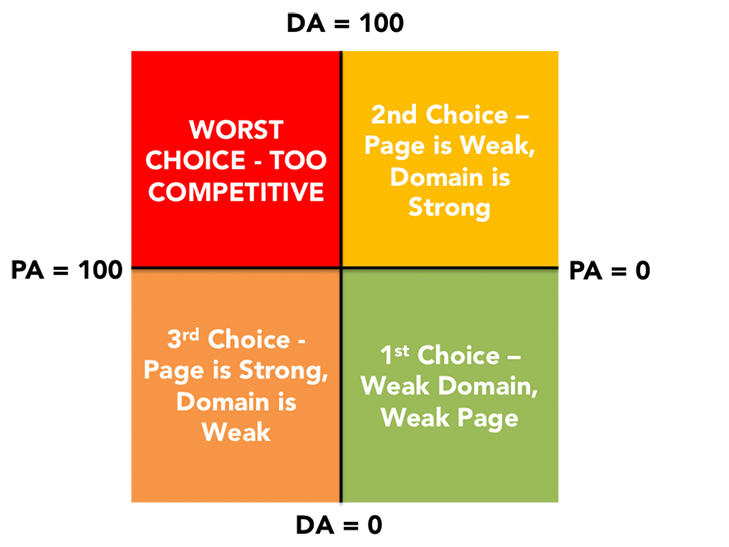
The higher the PA and DA of the ranking websites, the harder it will be for you to rank for that specific keyword.
Here are the top 4 search results for a more reachable phrase (880 monthly searches).
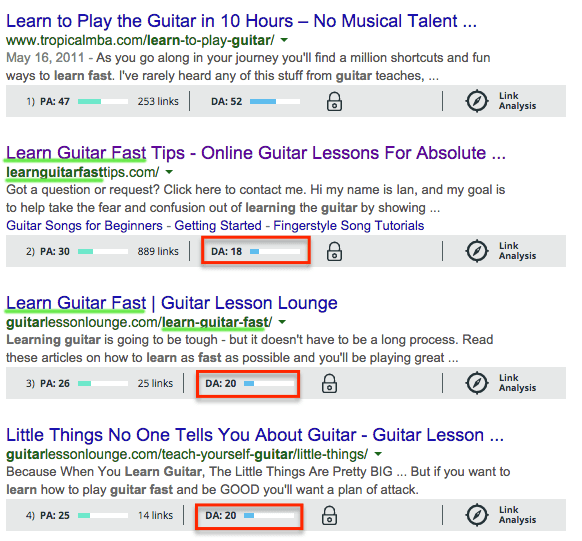
Some seriously low numbers on both metrics and two of the four pages aren’t even targeting the keyword in question. This appears to be a winner.
Rinse and repeat and here is the list I came up with:
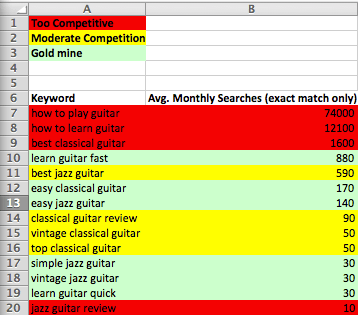
So we have some decent keywords to work with, but putting this many ideas together is content marketing suicide.
It’s not about stuffing keywords to gain rank. That’s so 2009…

It’s about creating a cohesive piece of content that fulfills the user intent. It just so happens that keywords fall in the mix.
Are your competitors intentionally optimizing for that phrase?
Visit some of the sites and quickly scan through their page.
There are three great signs for a workable takeover.
- Not an exact match root domain.
- Thin content.
- No use of exact match keyword phrases.
Most of the results from my search query met the criteria. All sites had extremely thin content (<300 words), only one exact match root domain (weak domain stats) and half without intent to optimize for that keyword phrase.
In addition to those factors, there is very little value for someone wanting to fulfill their learning needs.
Analyze the strength of your competitors’ backlinks.
Choose your favorite backlink checker. I use Ahrefs.
Enter one of the URLs in the search field and let your backlink checker do the work. You should end up with results that look like this:
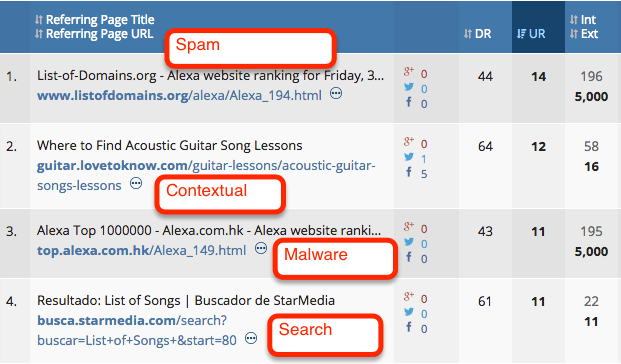
This particular page has 31 dofollow backlinks, but the quality of the links are pretty horrific.
From the four results, contextual backlinks are the most powerful. I wouldn’t even count the links from the other 3.
Two high quality backlinks have the power to outrank 100 low quality ones.
If you’re seeing powerful inbound links from major media sites like Huffington Post and CNN, it might be worth moving on.
On to the next step of our checklist – you still with me?
Step 4: Make Friends with Keyword Research
Here’s a headline to remember:

I won’t get into the psychology of viral content, but my primary keyword phrase has been seamlessly integrated into this title.
Let’s dive into some relevant keyword generation techniques.
Use Google’s Related Searches
Google gets 1.2 trillion searches per year (2012). They know a thing or two about search…
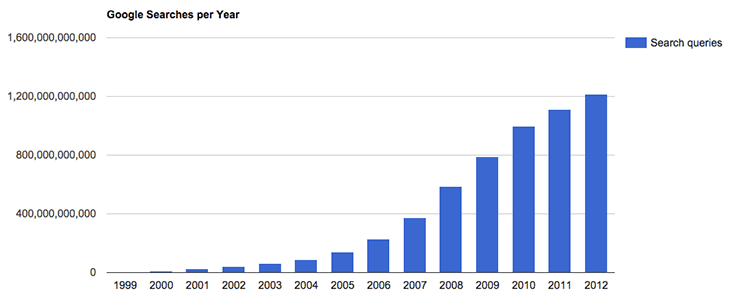
Real people make real searches and you want to be the person to fulfill their very real desires.
Start a new search query.

Scroll to the bottom and find yourself another 8+ related keyword phrases.

Throw these into keyword planner.
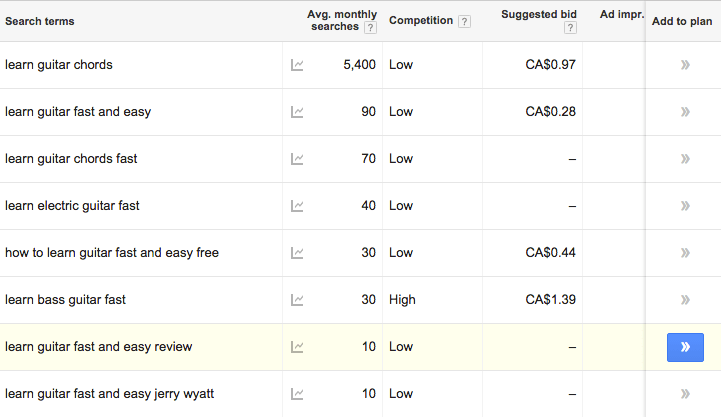
There are 8 more keyword phrases for you to consider when writing your epic post.
Use LSIs to Capture More Keyword Rankings
Latent semantic indexing (LSI) is a fancy term for synonyms or variations of keywords. Rather than wiping off the dust from your thesaurus, just search the phrase in question and look for the nice bolded words.
Cyrus Shepard puts it best:
When we use keywords phrases, search engines hunt for other phrases and concepts that relate to one another. So our first job is to expand our keywords research to incorporate these related phrases and concepts.
This graphic explains LSIs and keyword relationships.
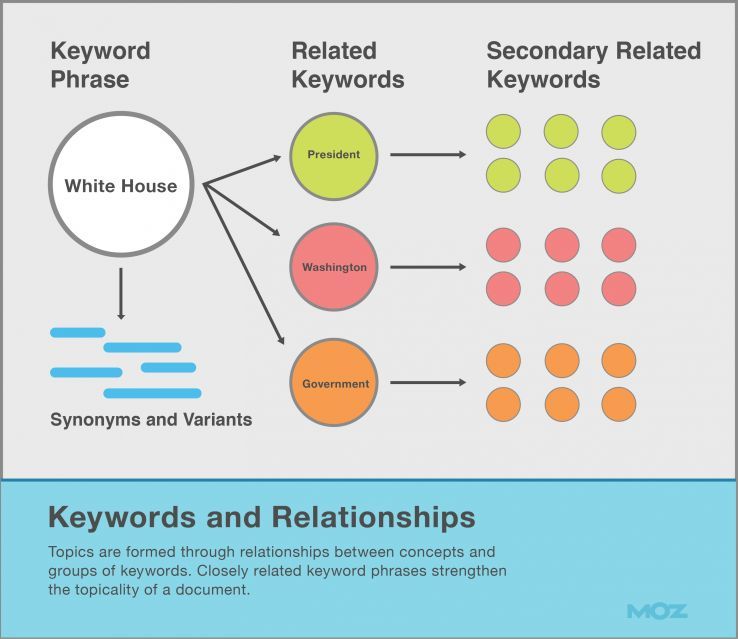
Here are two examples from our primary keyword target:
1. Common suffixes that do not change the meaning of the root word (ex. ‘-ed’, ‘-ing’, ‘-s’)

2. Synonyms (ex. fast = quick, ways = methods)

Take some of these LSIs and throw them in the mix. Although search engines understand that “fast” also means “quick”, they are always looking to bring the most relevant content to its users.
It’s your job to give them as much information as possible.
Multiply your Keywords with KeywordTool.io
Yes, Google’s Keyword Planner gives you a bunch of suggestions, but the majority of them are irrelevant.
KeywordTool.io is my favorite keyword generator for finding thousands of other related terms. Here’s how you use it:
Enter your search query.

This keyword generator will spit out a ton of relevant phrases like your original term. Hit the copy all button and add it to a new worksheet in excel.
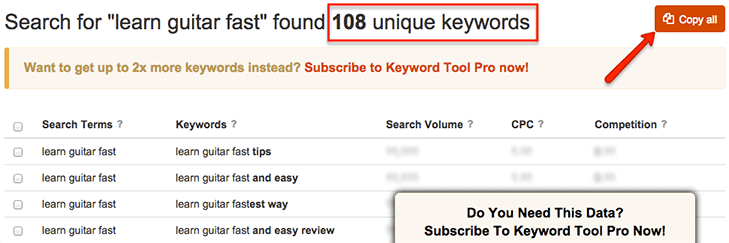
Rinse and repeat for other KW phrases in your list.
Get Search Volumes, Filter and Organize
If you’ve gone through this in great detail, then you have way too many keywords to filter through.
You can copy and paste everything into GKP, but I’m guessing you don’t have 2 weeks to devote to keyword research.
Here’s how I use Market Samurai to speed up the process.
I copy all categorized keyword phrases from my spreadsheet and add them to the software.
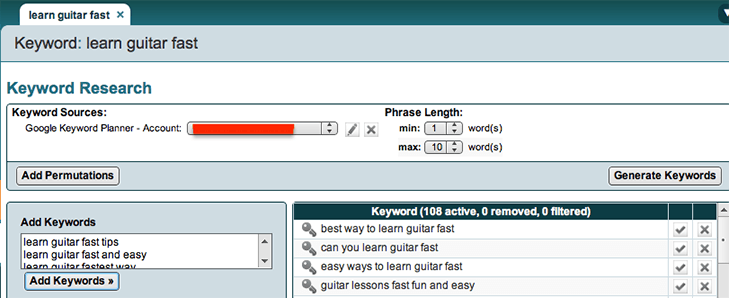
Analyze the keywords for total searches, title comp, URL comp and SEO comp.

Rinse and repeat for other keyword phrases in new tabs.

And just like that, I have an outline of what people are searching for and over 600 keywords to filter through.
Step 5: Keywords Should Fit Your Content – Not the Other Way
What happens when you use your content to fit keywords?
You chase low converting traffic and rarely rank for the keywords you were targeting.
A lose-lose if you ask me.
Here’s what you can do to avoid making this mistake:
Create an outline based on your audience research.
Even if you happen to “trick” the search engines, a real person will bounce faster than your next rent check.
You are targeting real people with real needs.
Remove phrases that don’t make sense in a sentence.
If you think it “makes sense”, then it doesn’t. Get rid of these now.
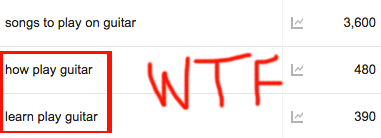
Look through your outline and assign relevant keywords where they fit best.
Keywords are about relationships.
Categorize your keywords in your content outline where it makes sense. When search engines can easily create relationships within your content and appropriately index it for keyword search queries, your chance at ranking increases.

Use forums and Quora to get into the mindset of your audience.
I’ll say it one last time (promise).
You are targeting real people.
And you know what?
Real people post in forums.
Use this search operator to find hundreds of forums:
inurl:forum [your keyword phrase]

Without even clicking through, we find some more pain points.
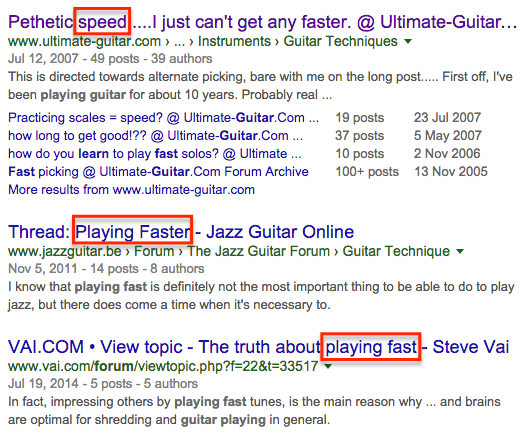
But is this really a pain point for your audience? Let’s run the inurl function again.

Definitely a pain point…
Click through and we find out more.
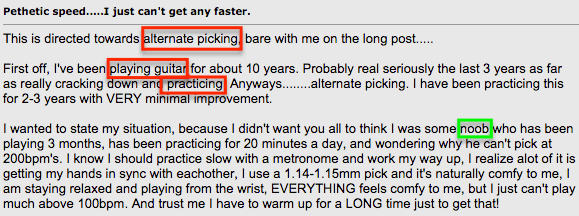
And this:

Not only do we know how they speak, but also know the terminology they use and potential solutions to a common problem.
Last forum example:
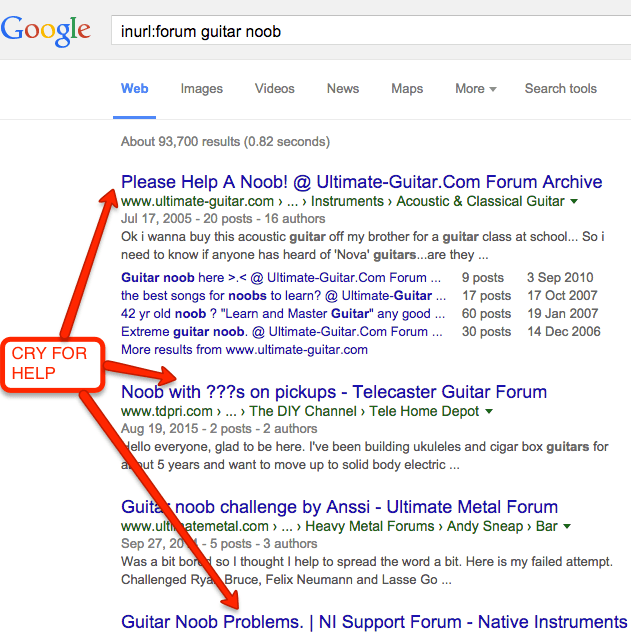
Please help these forum “noobs”.
Tip: save these links for promotion.
Keep reading…
Quora is also an awesome tool for finding pain points and your niche lingo.
Enter your search query and here are some more results:
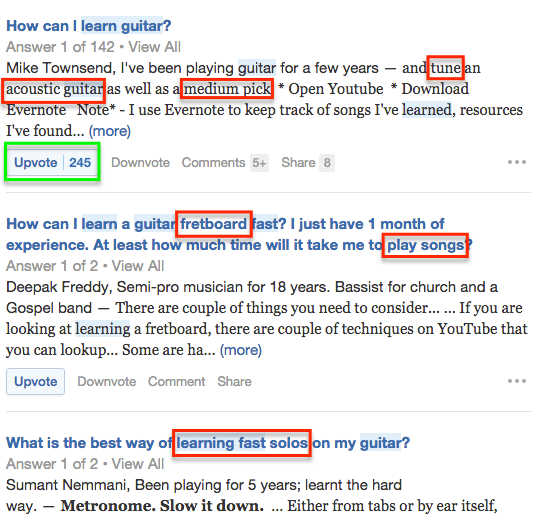
This next part is very important.
Click through the results with a high number of upvotes.
Take a look at the number of followers and follow this topic.

We’ll talk more about Quora in promotion.
Step 6: On-Page Optimization for this Post
Aside from keyword optimization and interlinking to other posts, there are 3 things we need to optimize:
- Images
- Meta tags/headlines
- Social share titles, descriptions, and images.
If you’re using WordPress, the only plugin you need is WordPress SEO by Yoast (#4).
Optimize your images for page speed and image search rankings.
Images add to your page’s load time and will therefore affect your search engine rankings. Before uploading your images to your server, you’ll need to optimize the file names and decrease file size.
By using keyword rich file names, you are increasing your chances of being found in Google images. Maybe not the best traffic source, but it’s better than no traffic at all.
Images are a cinch.
You can use JPEGMini or PunyPNG to bring your file size down by 80% without compromising the quality of your images.
If you’re a WordPress user, take Kraken.io for a spin. They have a WordPress plugin that automatically optimizes your images when uploaded to your media gallery.

Create click-worthy headlines and descriptions.
Meta titles and descriptions are for both ad copy and SEO. Quality advertisement copy drives click throughs to your website.
In addition to clickable copy, you want to keep the Meta title length under 55 characters and Meta description under 160 characters.
Most titles and descriptions exceeding these limits get cut off like this:

Create Awesome Social Share Images in 2 Minutes
Head on over to canva.com and create a Facebook ad.

- Choose your favorite template or upload a stock photo.
- Download the photo.
Now create a captivating title using examples from BuzzFeed’s viral headlines and an appropriate description.
Here’s another search operator to search only Buzz Feed pages.
site:buzzfeed.com [your keyword phrase]

Add them to your WordPress SEO settings and you’re ready to be shared.
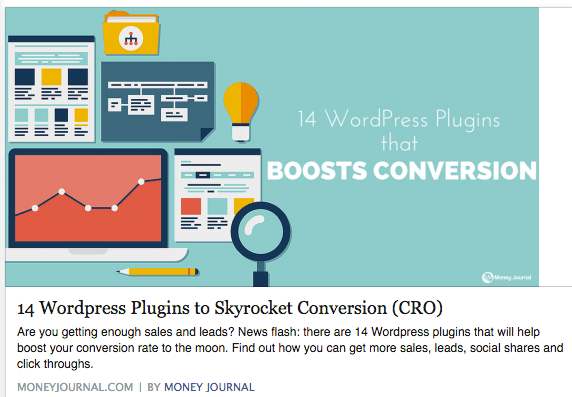
Step 7: Promoting the Heck Out of Your Content
If you’ve followed these steps, then you’ve put in a lot of hard work that most bloggers aren’t willing to do.
Your hard work will pay off. Promise.
Different content mediums serve different purposes. Let’s explore a few must have promotion techniques starting with your most loyal peeps.
Email your Subscribers
These are your most loyal fans and have shown genuine interest in your content. They are already engaged and will be your active community.
In your email, ask them for a comment or share.
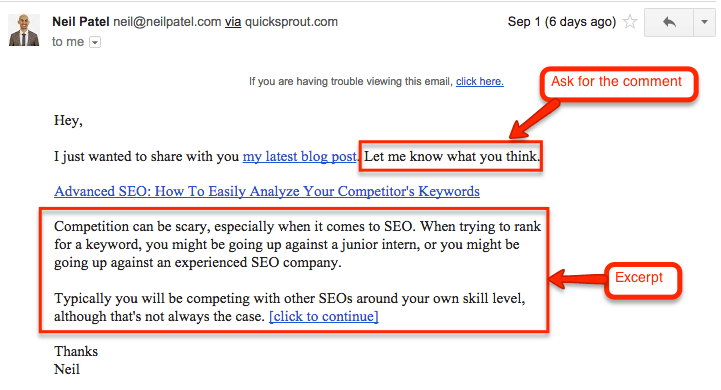
They will be the first set of people who will help build social proof.
Post and Promote on Social Media
Posting to your social media channels isn’t anything new.
But here’s the deal:
These people have made the decision to follow you because they appreciate the content you post.
When they hit that like or share button, they’re adding to your social stats and expanding your audience reach.
And what does that do besides create a warm, fuzzy feeling?
It quickly builds social proof.
If you’re not getting enough likes and shares, put some money into social ads. Facebook is my choice for initial ad spend.
Facebook ads are super cheap when done right. I’ve found getting website clicks and engagements is a lot easier than getting a retweet.

Think about it:
On average, 6,000 tweets are tweeted per second and more than 82% of people on Twitter follow more people than their follower count.

I’ve found engagement to impressions ratios to be significantly higher with Facebook ads.
I’ll normally throw money into Twitter after the social proof has been built. Twitter is a better business medium.
More businesses = more links.
Join Closed Facebook Groups:
I’ve come across three different kinds of groups (highest to lowest value)
- Smaller engaged groups.
- Large free promotion groups.
- Spam groups – don’t bother.
Smaller Engaged Groups:
You’ll find very little promotion and a lot of questions. These are groups where people share their successes and seek help or encouragement.
The key here is to contribute and help when you can.
Here’s how you can find a tightly knit group:
1. Search for people in an industry similar to yours.

2. Click on the more button and choose groups.

3. Look for closed groups that have keywords like “ask questions”, “hang out” or things that show that they’re looking to create a community.

4. Join and wait for approval. As long as you fit the criteria (ie. Canadian, mommy, blogger), you shouldn’t have a problem getting accepted.
Although the numbers won’t make you go viral, you get the opportunity to engage with real people with real opinions.
Large Groups for Promotion:
When I say “for promotion”, I literally mean for promotion. The title will likely have that word in it.

I still prefer looking for closed groups since public groups get flooded faster than you can join.
Meaning…
You have 30 seconds of exposure before your latest post gets thrown into the archives.
Some groups have “promotional days” which I’ve found to have a slightly better engagement rate.

I wouldn’t spend too much time engaging with people in these groups unless an admin happens to let you post outside of their regular promo schedule.
The key takeaway is to engage with people. They’ll help you bump your social stats and may link to your site in a future post.
Reach out to the people you mentioned.
You might be thinking:
These people don’t want to hear from me.
You might be right. But people love being talked about. By mentioning someone as an expert source, you are further affirming their presence in their vertical.
Since contact forms have a default subject line like “Contact from Money Journal” and lack formatting options, you want maximal customization to grab their attention.
Here’s how you can find an author’s email address:
Head on over to voilanorbert.com and enter their name and domain.

Here’s the email I send to experts I mention:
And the results?

These are busy people you’re contacting, so don’t get your panties in a bunch if they don’t reply or share your message.
Reach out to Niche Relevant Blogs
The first time I read this, I thought it was the stupidest idea I had ever read.
Why would someone who writes about the same topics want to link to my content?
You will definitely run into people that won’t share your content even if you gave them your kidney.
But others (usually authorities) are always looking for great content they can share with their community.
Here’s how you can find people who want to know about your content:
1. Search for your primary keyword phrase.
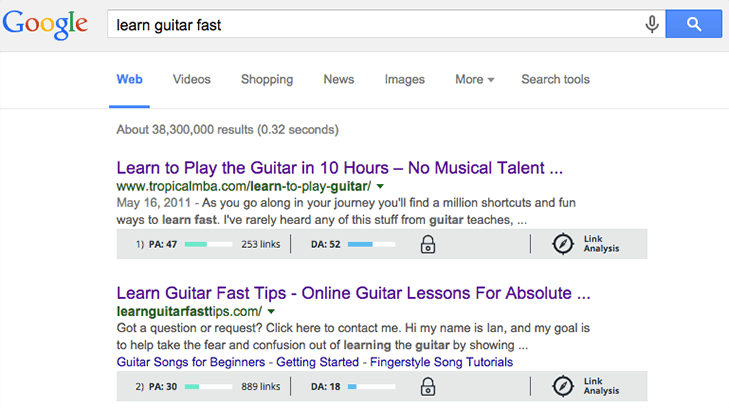
2. Copy the URLs and throw them into a backlink checker like Ahrefs or Majestic.
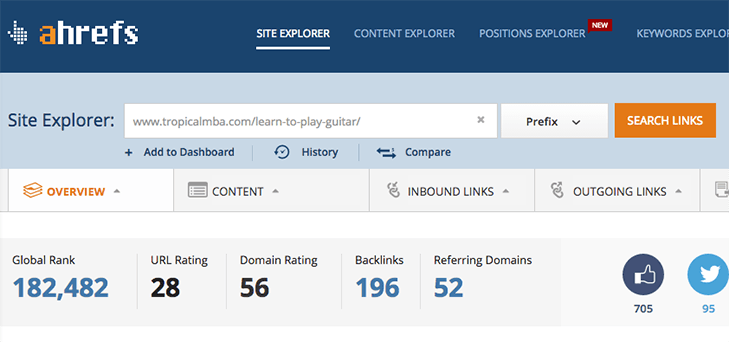
3. Analyze their “Dofollow” links and look for blogs who have linked to your competitors.
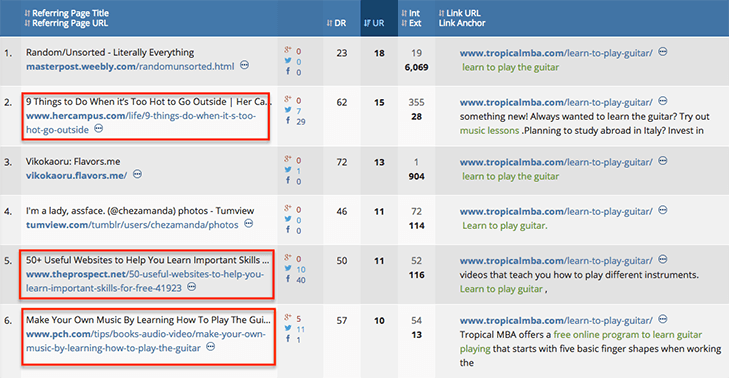
4. Find the author of the post.

5. Use VoilaNorbert to look for their email address. If you happen to come across a “catch-all domain”, look for them on Twitter.

Here’s an example of a Twitter interaction with an author from Blogging Pro:

Chris enjoyed the content, so he shared it.
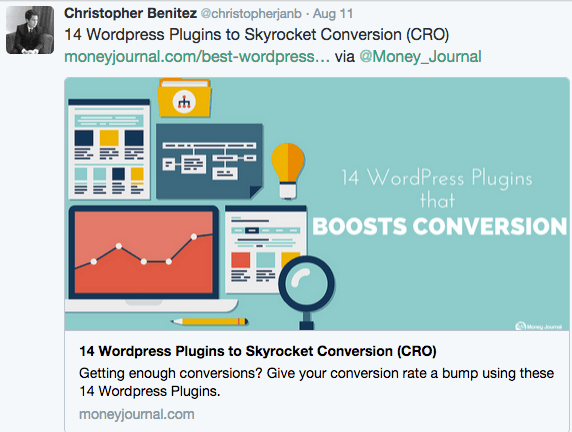
Time to craft your outreach emails.
I’ve tried two strategies for outreach emails with numerous different copies.
The hard sell (2.8% conversion):
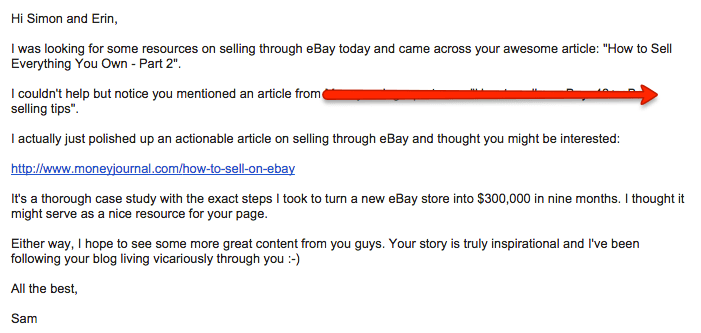
And the feeler email (12% conversion + 3 guest post opportunities).
After hundreds of emails sent, I took Brian Dean’s advice that sent Google bot crawling.
Most people pitch bloggers the complete WRONG way.
Instead of gauging interest with a feeler message, they go straight for the hard sell.
Yes folks. This is the approach to follow.
Fact: Most people won’t link to you or share your message with their communities. In fact, most won’t even open the link.
So what should you do when you don’t receive a response? Call it quits?
Heck no! You need to follow up.
Here’s a follow-up email I sent to people who didn’t respond within a week.
Hi [Name],
Just a friendly follow-up. Were you interested in the article on [topic]? I’m sure your inbox gets bombarded daily, so no hard feelings if you’re too busy. It just got me thinking…
If [name] saw value in [competitor company’s] article, then [name] will definitely want a unique take on the topic.
Not trying to get anything from you. Just want to impress lol 🙂
Cheers,
Sam
This exact follow-up email increased my reply rate by 23.5% and sparked a few relationships with influencers in my niche.
They probably haven’t heard of you, so what makes you think they’ll open your link? What differentiates your link from another malware induced site?
So we send the feeler.
Here’s the exact script that I sent to earn myself a 12% conversion to complete strangers:
I got an overwhelming number of emails like this:
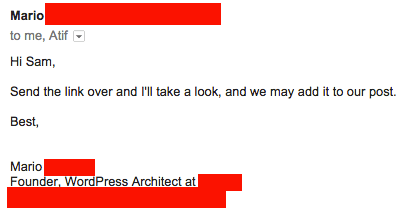
Make sure to thank them for taking the time to respond to your email. It’s just common courtesy.
Send them your article and an additional value proposition. If all goes well, you should have an interaction like this:
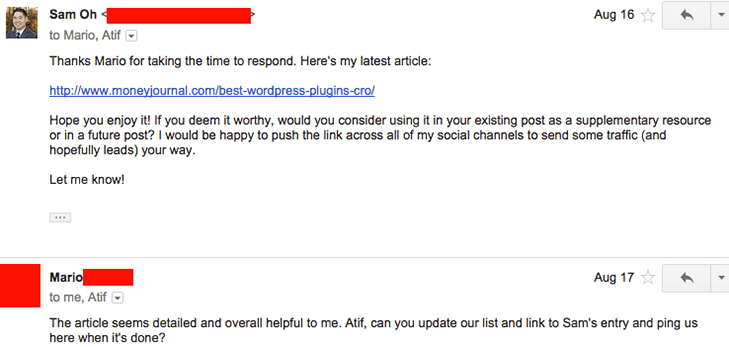
That simple email scored me a PR 5 contextual link and another person in my trusted networks.
Find Link Roundups
These are the easiest white-hat links to get.
Here’s why:
Webmasters are actively looking for links to be added to their next roundup. Make their life easier and submit your content.
Here’s how you can start getting featured in roundups:
Throw this into your next Google search:
intitle:roundup “keyword phrase”
You can try variations of roundup like “links roundup” or whatever produces results.
Filter down your results to the last month. This gives us fresh results from bloggers who are still updating their website.
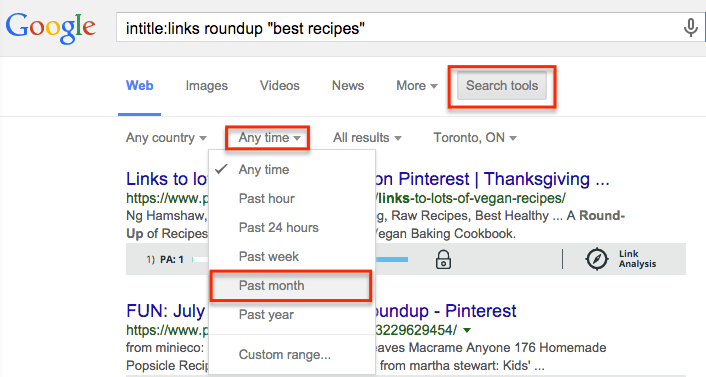
Find a suitable roundup with some decent metrics (ex. DA >= 30). Find the author’s name and run it through VoilaNorbert.
If you find a generic name like “admin”, “webmaster” or “company name”, then hit that contact button because we’re ready to give them a new link to add to their next list.
Here’s the script that I use:
You’ll get the typical no response or the “I’m not accepting suggestions”, but the few responses you get will give your content the chance it would have never had.
Others have had better success by using pen names. After all, no one likes a self-promoter.
Don’t take it personally if they don’t respond. You have to reach out to find out.
Go Back to Your Bookmarked Forums and Quora Threads
During your audience research, you should have bookmarked and followed some of those threads.
If you didn’t, then go back to your search history because we’re about to give them exactly what they want.
I’ve only put up one detailed post on Quora, but it’s had 709 views (last 30 days) and is slowly climbing the ranks since there are over 130 answers on the thread.
Here’s the format I follow:
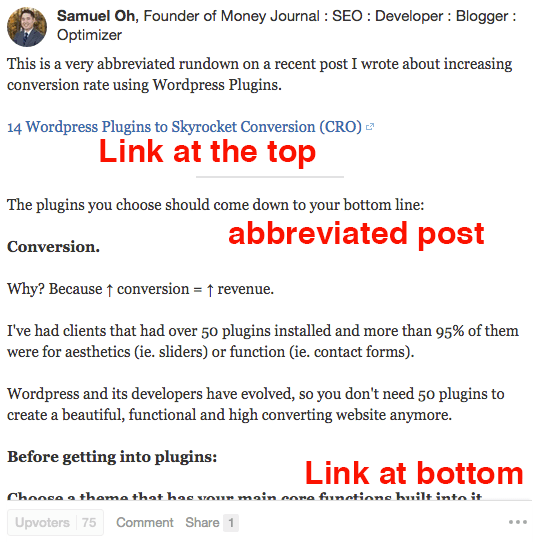
I originally put a link only at the bottom and the click through rate was pathetically low.
My answer is long and detailed. Most of them won’t get to the end of the post, so they won’t see my link or they’ll just scroll right through it.
I edited the post with a link at the top since there is enough content to back it.
And the results?
Click through rate jumped from roughly 3% to 14%.
Even though Quora and most forum links are nofollowed, you get a chance to put your content in front of more people than you have on your list.
These sites rank well in the SERPs for thousands of long tail keyword phrases, indirectly giving you opportunities to get other bloggers and influencers to discover your content.
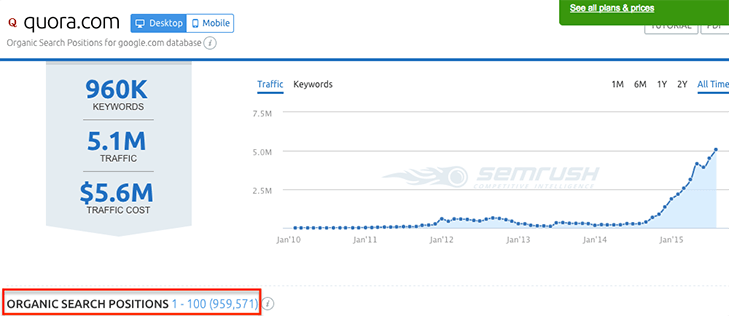
Download the PDF Checklist Before you Start your Next Post:
If you’ve been following the pray and post method, this might seem a bit overwhelming.
No worries.
I’ve put together a printable version of this SEO checklist (PDF) for bloggers to start gaining traction in this crowded marketplace.
Leave a comment and let me know your thoughts on this process below. Then click here to download your copy of the Mammoth SEO Checklist.
If you’re a visual learner, you can watch this 20 minute video tutorial on how to do SEO for your blog.





